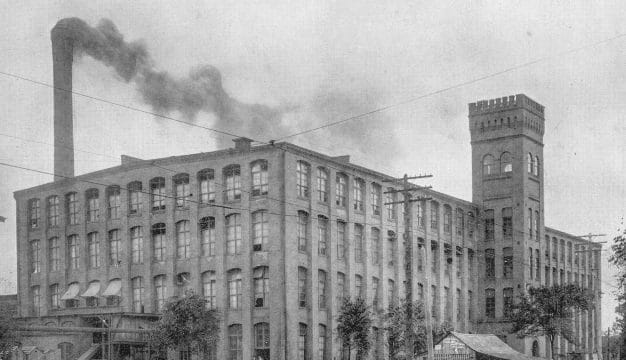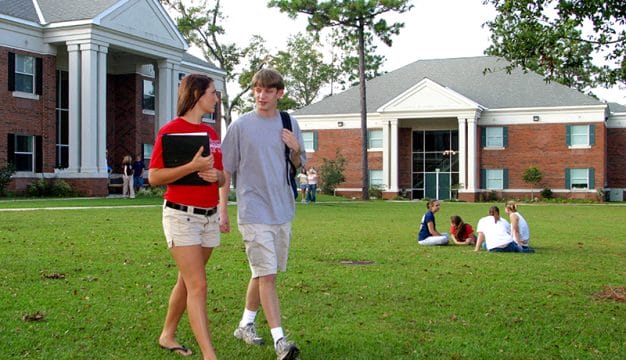George Denny
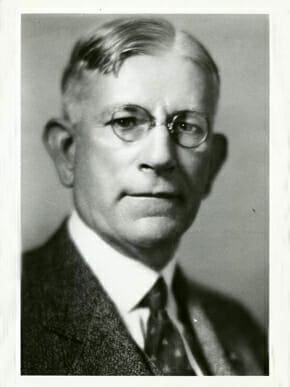 Denny, George
George Hutcheson “Mike” Denny (1870-1955) is best known for his 25-year tenure as president of the University of Alabama (UA) during its most significant period of growth. Having only nine major buildings, 400 students, and no paved streets or sidewalks on campus when Denny assumed the helm in 1912, the university expanded, through his wise financial management and effective appeals for donations and legislative funding, to 23 major buildings, 35 fraternity and sorority houses, and nearly 5,000 students by the time of his retirement in 1936. Most significant in raising the institution to national attention, however, was the greatly expanded football program he fostered.
Denny, George
George Hutcheson “Mike” Denny (1870-1955) is best known for his 25-year tenure as president of the University of Alabama (UA) during its most significant period of growth. Having only nine major buildings, 400 students, and no paved streets or sidewalks on campus when Denny assumed the helm in 1912, the university expanded, through his wise financial management and effective appeals for donations and legislative funding, to 23 major buildings, 35 fraternity and sorority houses, and nearly 5,000 students by the time of his retirement in 1936. Most significant in raising the institution to national attention, however, was the greatly expanded football program he fostered.
Denny was born on December 3, 1870, in Hanover County, Virginia, the son of Rev. George and Charlotte Wright Denny; he had at least four siblings. Denny earned a B.A. and M.A. in classics from Hampden-Sydney College in Hampden Sydney and a Ph.D. from the University of Virginia in Charlottesville in 1896. He taught Latin at Hampden-Sydney (where he also served as the head football coach) and at Washington and Lee University (W&L) in Lexington, Virginia, for five years prior to serving as president of W&L for the next decade. He was married in 1899 to Jane Strickler Denny, with whom he would have four children.
In 1912, Denny accepted an invitation from the University of Alabama’s board of trustees to take the position of president. When he took office, he found the institution to be poorly financed compared to similar universities in the region and even the state’s normal schools, as teachers’ colleges were known at the time. With too little funding coming from the legislature, Denny resorted to creative measures. He restricted operational expenses, faculty salaries, library development, and graduate research; faculty shortages were overcome in part by recruiting upperclassmen to teach. Additional funds came from increased student fees and financial gifts, largely from private foundations, and eventually higher state appropriations. Despite initial vows that athletics would never overshadow academics and he would never inflate enrollments, Denny employed both strategies to address budgetary shortfalls.
By 1917, one-third of the university’s income was derived from student fees, with out-of-state tuition being an especially lucrative resource. A $40,000 gift from the Peabody Education Fund enabled Denny to establish an endowed chair of education in the late 1920s. Revenues from leasing university-owned lands and donations from boosters and alumni through a Million Dollar Fund Drive launched in the 1920s increased the university’s endowment and expansions. In 1925, he was named the most distinguished professional leader in Alabama by popular vote.
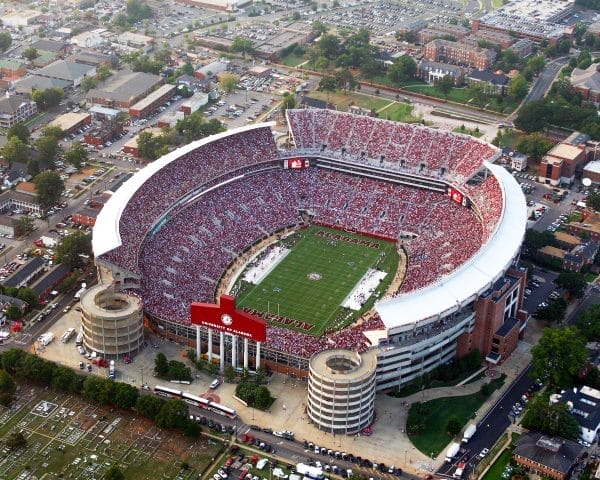 Bryant-Denny Stadium
Denny’s most visible development during his tenure at UA was his reinvention of the football program. Prior to his assuming the helm, Alabama had a mediocre 42-44 record since the program’s inception. Denny set the football program on its route to success in 1919 with the controversial hire of Xen Scott, best known as a reporter on horse racing. Scott would lead the team in a 29-9-3 record by the 1922 season, but retired owing to failing health. In October 1920, UA’s football field, simply known as University Field, was renamed Denny Field in honor of Denny’s efforts to improve the football program. Scott’s successor, Wallace Wade, would serve as coach from 1923 to 1930 and would lead the team to three national championship titles and three Rose Bowl titles, including an epic win over the University of Washington Huskies in the 1926 Rose Bowl. Prior to embarking on the six-day train journey with his team to Pasadena, California, Denny famously remarked that the game had garnered more publicity value than any other recent event in the state’s history. He also encouraged players to bring their books to study for mid-year exams. So closely did he monitor his team’s progress that he attended practices, often risking injury as he watched from the sidelines. With the hire of coach Frank Thomas, who succeeded Wade in 1931, Denny again saw the Crimson Tide earn a national championship by defeating Stanford University in the 1934 Rose Bowl. During Denny’s tenure, UA also established Big Al the elephant as the team mascot and inaugurated the fight song “Yea Alabama.”
Bryant-Denny Stadium
Denny’s most visible development during his tenure at UA was his reinvention of the football program. Prior to his assuming the helm, Alabama had a mediocre 42-44 record since the program’s inception. Denny set the football program on its route to success in 1919 with the controversial hire of Xen Scott, best known as a reporter on horse racing. Scott would lead the team in a 29-9-3 record by the 1922 season, but retired owing to failing health. In October 1920, UA’s football field, simply known as University Field, was renamed Denny Field in honor of Denny’s efforts to improve the football program. Scott’s successor, Wallace Wade, would serve as coach from 1923 to 1930 and would lead the team to three national championship titles and three Rose Bowl titles, including an epic win over the University of Washington Huskies in the 1926 Rose Bowl. Prior to embarking on the six-day train journey with his team to Pasadena, California, Denny famously remarked that the game had garnered more publicity value than any other recent event in the state’s history. He also encouraged players to bring their books to study for mid-year exams. So closely did he monitor his team’s progress that he attended practices, often risking injury as he watched from the sidelines. With the hire of coach Frank Thomas, who succeeded Wade in 1931, Denny again saw the Crimson Tide earn a national championship by defeating Stanford University in the 1934 Rose Bowl. During Denny’s tenure, UA also established Big Al the elephant as the team mascot and inaugurated the fight song “Yea Alabama.”
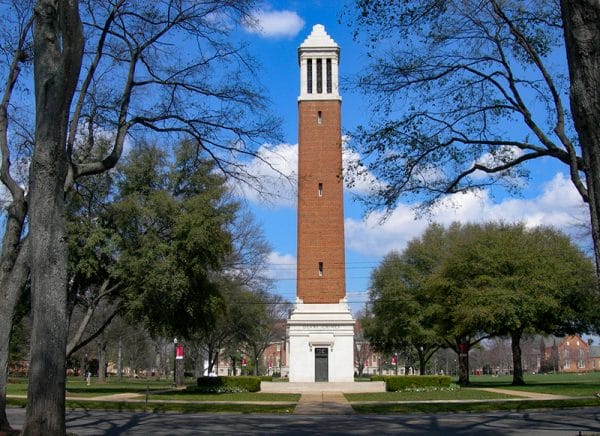 Denny Chimes
In recognition of Denny’s success, the legislature in 1927 increased the university’s annual budget by more than $300,000 and provided another $750,000 for new buildings. In addition to his support for the UA football program, Denny maintained warm personal relationships with students and alumni as well as faculty. Keenly interested in students, he fostered a major expansion of fraternities on campus. So pleased with Denny’s stewardship were students, alumni, and friends of the university that they donated $100,000 in 1928 for the construction of a bell tower in the university quadrangle in honor of his service; named Denny Chimes, it was completed in 1929. That same year, the university completed a new football stadium, christened Denny Stadium (now Bryant-Denny Stadium). The construction of nearly two dozen (mostly academic) additional campus structures was accomplished largely with private money, and Denny often claimed the improvements cost Alabama taxpayers only $365,000. He often could be found observing the layout and landscaping of new structures each day after his office hours. He became affectionately known as “Mike.”
Denny Chimes
In recognition of Denny’s success, the legislature in 1927 increased the university’s annual budget by more than $300,000 and provided another $750,000 for new buildings. In addition to his support for the UA football program, Denny maintained warm personal relationships with students and alumni as well as faculty. Keenly interested in students, he fostered a major expansion of fraternities on campus. So pleased with Denny’s stewardship were students, alumni, and friends of the university that they donated $100,000 in 1928 for the construction of a bell tower in the university quadrangle in honor of his service; named Denny Chimes, it was completed in 1929. That same year, the university completed a new football stadium, christened Denny Stadium (now Bryant-Denny Stadium). The construction of nearly two dozen (mostly academic) additional campus structures was accomplished largely with private money, and Denny often claimed the improvements cost Alabama taxpayers only $365,000. He often could be found observing the layout and landscaping of new structures each day after his office hours. He became affectionately known as “Mike.”
Even during the economic disaster of the Great Depression, Denny continued to expand the UA campus, patterned largely after the University of Virginia. He also made significant changes in the academic life of the university, the most notable being a dramatic increase in faculty members, including a tripling of those with PhDs, from 12 in 1912 to 36 in 1932. In addition, UA established the School of Commerce and Business Administration (now named the Culverhouse College of Commerce) and School of Home Economics (now named the College of Human Environmental Sciences) along with departments of music and fine arts. Denny helped develop the law school into the state’s leading institution for training lawyers, fostered graduate studies, and increased the number of women students from 55 to 1,200 by 1936. He achieved this impressive increase by establishing a women’s campus, the school of home economics, a women’s council, sororities, and a women’s gym, and by expanding opportunities in art and music for women. He was also instrumental in creating extension centers that led to the establishment of four other state universities: the University of Alabama at Birmingham, Auburn University at Montgomery, the University of Alabama in Huntsville, and the University of South Alabama, located in Mobile. Denny once referred to the university as the “capstone” of Alabama’s educational system in a speech about his accomplishments, creating the well-known nickname for the school.
 George Denny and Johnny Mack Brown
At the height of his popularity in 1933, Denny was urged by friends and admirers to run for governor, but poor health forced his resignation as president of the university in 1936. Even after the appointment of his successor, Richard Foster, and his move back to Lexington, Virginia, Denny retained the perfunctory title of chancellor. When Foster died suddenly in 1941, Denny returned and briefly resumed the presidency and thereafter remained closely attached to the university and its football program. In 1946, Denny was acclaimed “first citizen of Alabama” by the residents of Birmingham. Denny returned to Lexington after retiring but frequently returned to Tuscaloosa for Homecoming and Alabama football games. He died on April 2, 1955, of heart failure and was buried in the Stonewall Jackson Cemetery, having served the longest term in office of any president in the University of Alabama’s lengthy history.
George Denny and Johnny Mack Brown
At the height of his popularity in 1933, Denny was urged by friends and admirers to run for governor, but poor health forced his resignation as president of the university in 1936. Even after the appointment of his successor, Richard Foster, and his move back to Lexington, Virginia, Denny retained the perfunctory title of chancellor. When Foster died suddenly in 1941, Denny returned and briefly resumed the presidency and thereafter remained closely attached to the university and its football program. In 1946, Denny was acclaimed “first citizen of Alabama” by the residents of Birmingham. Denny returned to Lexington after retiring but frequently returned to Tuscaloosa for Homecoming and Alabama football games. He died on April 2, 1955, of heart failure and was buried in the Stonewall Jackson Cemetery, having served the longest term in office of any president in the University of Alabama’s lengthy history.
Additional Resources
“Capstone’s Dr. ‘Mike’ Denny Dies at 84 in Virginia Home.” Montgomery Advertiser, April 3, 1955.
Denny, George H. “Denny Presents University Brief.” Montgomery Advertiser, August 7, 1936.
Denny, George Hutchinson. “Memoranda for Biographical Sketch of Dr. George Hutchinson Denny.” Surname File, Alabama Department of Archives and History, Montgomery, Alabama.
“Dr. George H. Denny, Beloved Alabama Educator, Chancellor of Capstone, Dies.” Birmingham News, April 3, 1955.
“Remarkable Growth of University in Dr. Denny’s Regime Is Outlined.” Montgomery Advertiser, December 14, 1936.
Sellers, James B. “History of the University of Alabama, 1902-1957.” Vol. II, revised and edited by W. Stanley Hoole. W. S. Hoole Special Collections Library, University of Alabama, Tuscaloosa, Alabama.
Wolfe, Suzanne Rau. The University of Alabama, A Pictorial History. Tuscaloosa: University of Alabama Press, 1983.
